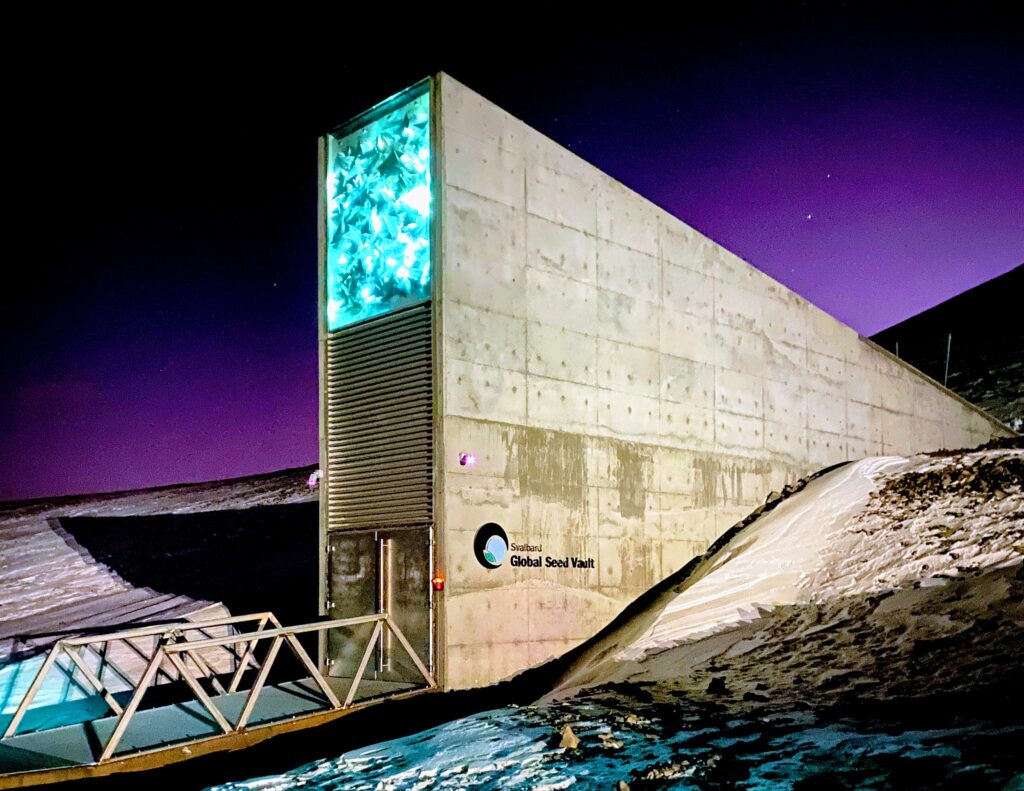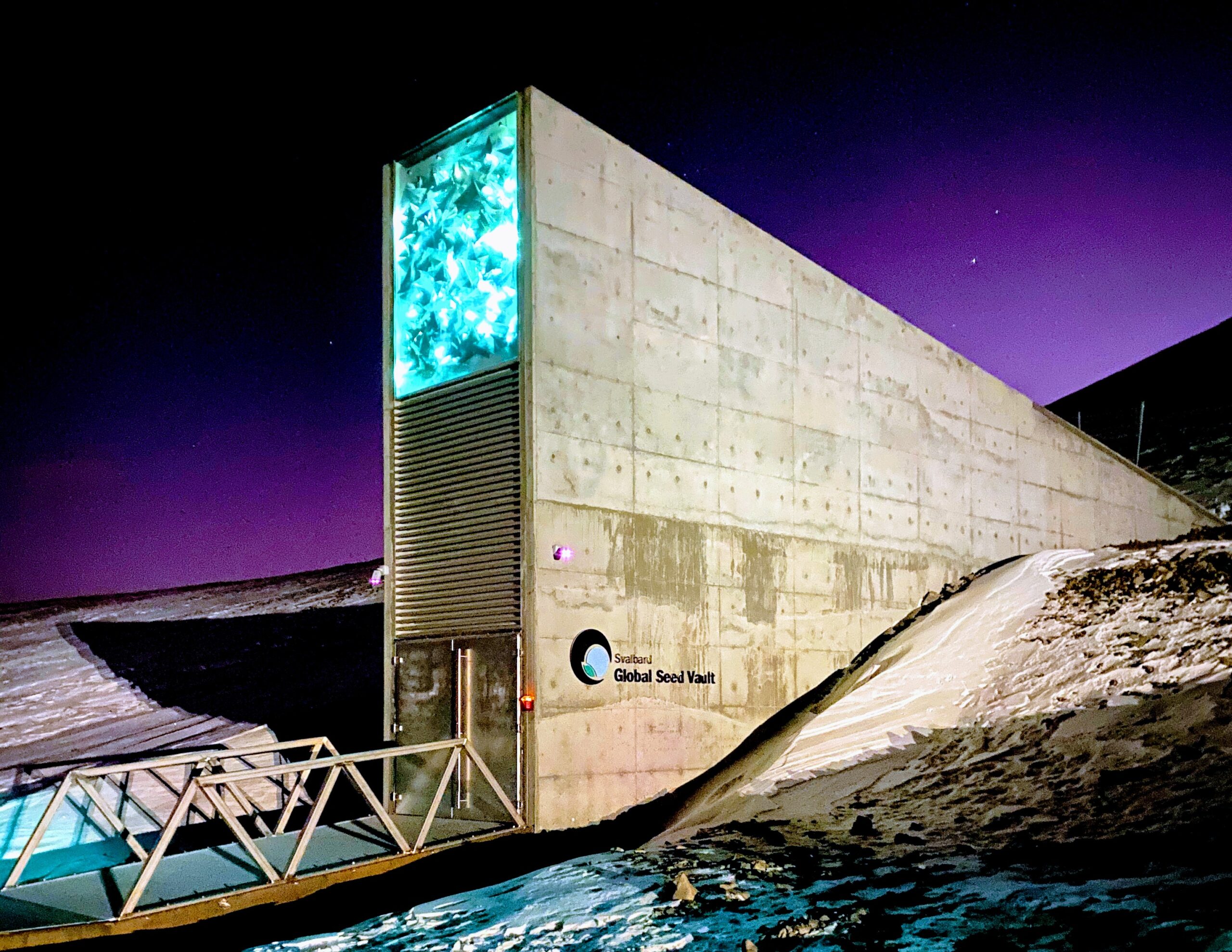In the heart of Sussex, the Millennium Seed Bank stands as a fortress against the uncertainties that loom over our planet. This article unravels the tale of doomsday vaults, delving into their crucial role in preserving everything from seeds to data, and even microbial biodiversity.



Inside the Ice-Cold Vaults
The heart of Sussex harbors a sanctuary against the uncertainties that climate change and human activities impose on Earth – the Millennium Seed Bank. As we step into the ice-cold vaults, a subterranean realm designed to withstand the worst imaginable catastrophes, the temperature plummets to a bone-chilling -20°C. This section delves into the eerie and essential ambiance of these vaults, where rows of glass jars silently guard the future of our planet.
A Frozen Time Capsule
The vaults, akin to walk-in freezers, reveal the largest seed bank globally, housing nearly 2.5 billion seeds. These seeds, frozen to preserve their genetic diversity, are meticulously organized on shelves, creating a botanical library that transcends time. Each jar, sealed and safeguarded, symbolizes a potential lifeline for Earth’s biodiversity.
Preserving Plant Genetic Diversity
While the frozen expanse may seem otherworldly, the purpose is deeply grounded in ecological conservation. The Millennium Seed Bank serves as an “insurance policy against extinction,” aiming to combat the alarming decline of plant species worldwide. The article explores the intricate process of seed preservation and the significance of maintaining genetic diversity for the planet’s ecological balance.
Security Measures Amidst the Cold
The solemnity of the vaults is heightened by stringent security measures. Visitors, donned in protective blue coats, are required to sign waivers and adhere to strict guidelines. The article delves into the layers of security – from barcode systems decoding the seed varieties to alarms set to trigger if visitors linger beyond the allocated time. The very architecture of the vaults reflects a commitment to safeguarding Earth’s botanical heritage.
The Silent Guardians of Biodiversity
As fans whir and the cold presses in, the seeds within the vaults remain silent witnesses to the environmental challenges facing our planet. The chilling environment, far from a mere storage facility, becomes a sanctuary where the future of flora is entrusted. The article paints a vivid picture of these silent guardians standing resilient against the backdrop of an uncertain ecological future.
Hope Amidst the Cold
While the temperature inside the vaults is frigid, the mission is one of warmth and hope. The Millennium Seed Bank, with its frozen seeds, embodies a beacon of hope for a planet grappling with biodiversity loss. Each seed, frozen in time, holds the promise of rejuvenation and ecological revival. The article concludes by emphasizing the dual role of the ice-cold vaults – as a repository of seeds and a symbol of humanity’s commitment to safeguarding the rich tapestry of life on Earth.
A Global Network of Doomsday Vaults
Originating in the 1920s with Russian botanist Nikolai Vavilov’s seed bank in St Petersburg, the concept of doomsday vaults has evolved into a global network. Nearly 1,700 such facilities, often called “Noah’s Arks,” aim to secure humanity’s future by preserving genetic material, data, and even microbial biodiversity. The article explores diverse vaults worldwide, from Svalbard’s Global Seed Vault to the Arctic World Archive.
Data Preservation in the Frozen North
In the frozen expanse of Svalbard, the Arctic World Archive holds a unique position as a doomsday vault for data. Physical reels of film, stored in a decommissioned mine, encapsulate invaluable information. The article examines the challenges of preserving data in an era marked by cyber threats and misinformation, emphasizing the role of such vaults in maintaining the integrity of global knowledge.
Beyond Seeds: Cryopreserving Microbial Biodiversity
The Microbiota Vault, a nascent project, expands the horizon of doomsday vaults by aiming to preserve microbial biodiversity. Cryopreserving human faeces becomes a means to safeguard beneficial microbes vital for human health. The article explores the challenges and aspirations of this unique initiative, considering potential sites and the significant financial investment required.
Lunar Arks: A Celestial Safeguard
Venturing beyond Earth, the article unveils ambitious plans for a lunar ark proposed by engineers at the University of Arizona. This futuristic vision involves cryopreserving seeds, sperm, and egg samples on the moon, shielded in lava tube facilities. The article evaluates the feasibility of this celestial endeavor, acknowledging the challenges and uncertainties surrounding its realization.
Cryopreserving Earth’s Genetic Diversity
In the quest to secure Earth’s biological heritage against the impending threats of climate change, deforestation, and industrialization, a network of doomsday vaults has emerged as a safeguard for the planet’s genetic diversity. Among these, the Millennium Seed Bank stands as a flagship institution, pioneering the cryopreservation of Earth’s seeds, ensuring a living repository for the future. This section explores the intricate process of cryopreserving genetic material and the pivotal role it plays in preserving Earth’s biodiversity.
A Frozen Noah’s Ark
The concept of cryopreservation in the context of the Millennium Seed Bank is akin to creating a modern Noah’s Ark, but instead of pairs of animals, it houses an immense variety of seeds. The article delves into the historical roots of cryopreservation, tracing its origins to the visionary Russian botanist Nikolai Vavilov and his enduring seed bank in St Petersburg. The narrative unfolds to reveal how cryopreservation has evolved into a crucial tool for conservation in the face of contemporary ecological challenges.
Preserving the Fabric of Life
Cryopreservation goes beyond the conventional seed storage methods. The article delves into the scientific intricacies of the process, elucidating how seeds are meticulously prepared, treated, and frozen to ultra-low temperatures. These frozen seeds, suspended in time, retain the genetic information essential for the survival and adaptation of plant species. The cryopreservation process becomes a delicate dance with science, ensuring that the fabric of life remains intact within each frozen seed.
A Glimpse of Hope Amidst Extinction Fears
As species face unprecedented extinction threats, the article emphasizes the resilience embedded in these doomsday vaults. The Millennium Seed Bank, in particular, emerges as an “insurance policy against extinction,” fostering hope for the future. Each seed banked here becomes a potential catalyst for positive change, an optimistic note in the face of environmental challenges.
In conclusion, doomsday vaults transcend their ominous name, standing as bastions of hope and preparation for an uncertain future. From the icy chambers of seed banks to the lunar landscapes envisioned for celestial storage, these vaults embody humanity’s determination to preserve the legacy of Earth for generations to come.










